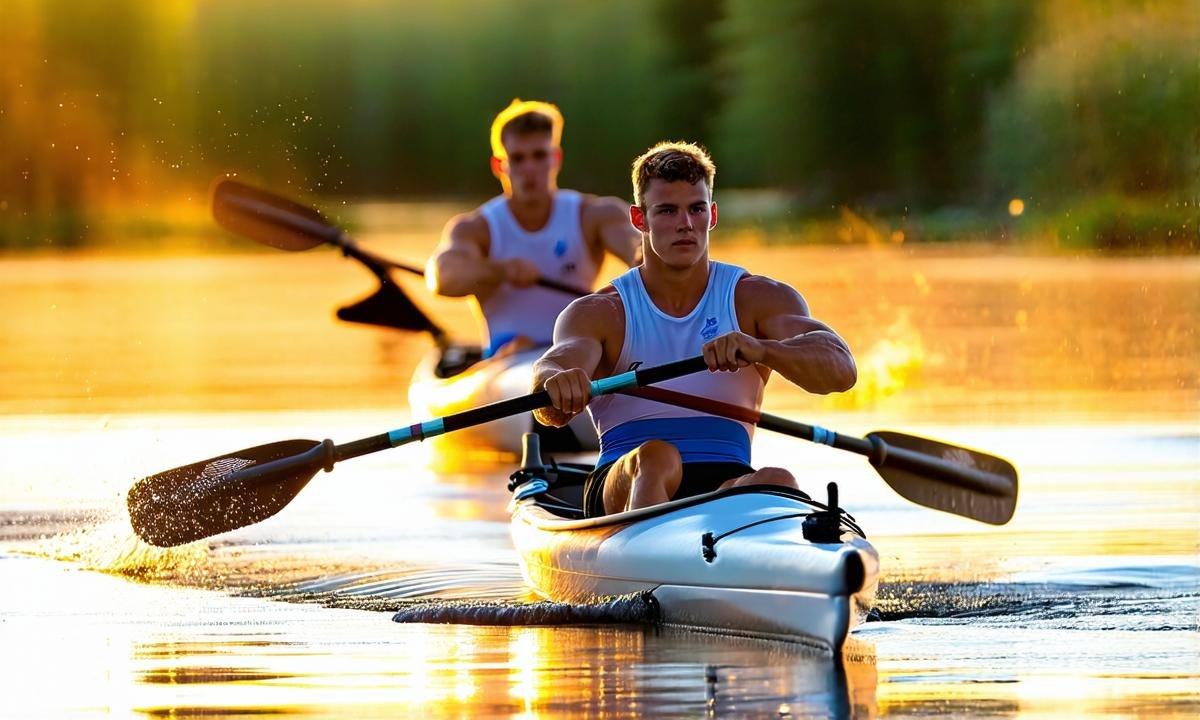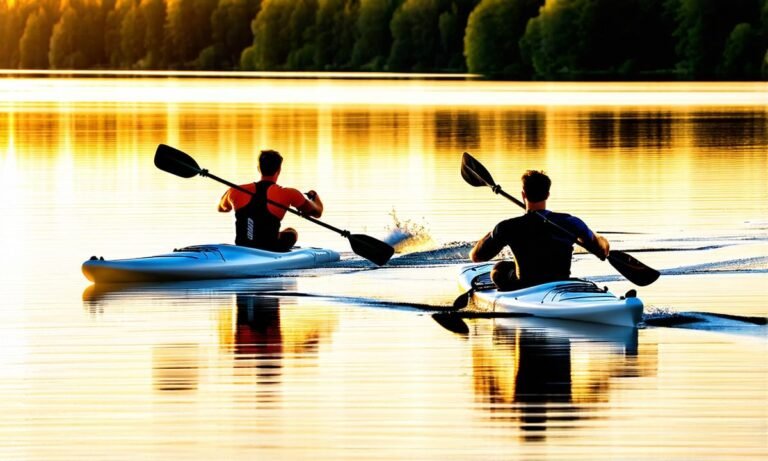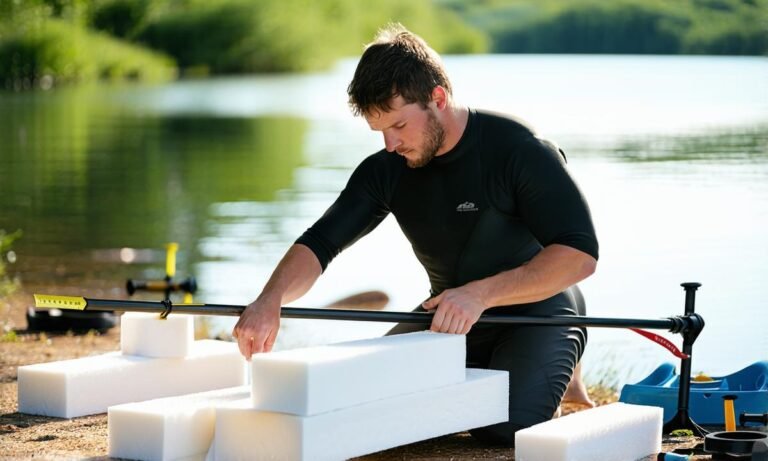Olympic Canoe vs Kayak: Which is Best for You?
Canoeing and kayaking may seem similar, but they each have unique qualities that set them apart. As someone who has observed these sports up close, I find their distinctions fascinating.
In the debate of Olympic canoe vs kayak, canoes typically feature an open top with a single-bladed paddle, while kayaks are closed and use double-bladed paddles. These differences impact performance in various competitive events.
The nuances of technique and style between the two will surprise you. Stay tuned for more details on how each sport excels in its own right and what makes them both exciting to watch.
5 Key Differences Between Olympic Canoe and Kayak

The world of Olympic canoeing and kayaking is rich with unique characteristics that set these two sports apart. Understanding these differences can help you decide which sport may suit your interests better.
1. Boat Design: One primary difference lies in the design of the boats. Canoes are typically open on top and have a more stable base, making them feel spacious. In contrast, kayaks feature a closed cockpit, allowing for greater maneuverability at higher speeds.
2. Paddle Type: The type of paddle used significantly impacts performance. Canoers use a single-bladed paddle positioned on one side, requiring skillful corrections to maintain direction. Kayakers wield double-bladed paddles, allowing for smoother forward motion without frequent adjustments.
3. Seating Position: Another noteworthy distinction is seating position. Canoeists sit or kneel to propel their craft forwards, providing a lower center of gravity for stability in rough water conditions. Kayakers sit low within their hulls providing protection from splashes while also enhancing balance during rapid turns.
“The right equipment can make all the difference when competing.” – National Recreation and Parks Association
4. Competitive Events: Each sport has its own categories in competitive environments as well. Olympic canoeing features events such as C1 (single canoe) and C2 (two-person canoe), which emphasize speed over longer distances like 1000 meters or 500 meters races.
Kayaking includes K1 (single kayak) and K2 (double kayak), adding spectacular sprint events along with slalom competitions that test agility against natural or artificial rapids.
5. Skill Development: Training approaches vary in both disciplines due to technique requirements related to paddling style and boat control methods.
Canoeing emphasizes strength-building exercises often tailored towards endurance racing while kayaking tends to focus heavily on refining techniques regarding strokes aimed at efficiency paired alongside flexibility training routines essential for navigating through challenging courses effortlessly.
How to Choose the Right Boat for Your Needs?
Choosing the right boat can be a daunting task, especially if you’re new to the world of paddling. Each sport has its nuances that cater to different preferences and skill levels.
Consider Your Goals: Knowing what you want out of canoeing or kayaking is essential. Are you looking for a relaxing day on calm waters or tackling thrilling rapids? Your ambitions will guide your decision.
The Role of Experience
Your experience level plays a significant part in determining which boat suits you best. Beginners often prefer recreational kayaks or stable canoes due to their forgiving nature. As skills advance, moving toward more specialized boats becomes an appealing option.
Assessing Comfort and Fit
A well-fitting boat enhances enjoyment while reducing fatigue during long outings. For instance, try sitting in both canoes and kayaks at your local rental shop before making a commitment.
- Canoes: Ideal for spaciousness and comfort when paddling with friends or family.
- Kayaks: Provide snug cockpit designs enhancing control against waves but may feel cramped initially.
Paddle Preferences Matter: The paddle type impacts your overall comfort during paddling sessions. Test various paddles before deciding which feels most natural; this is especially important if you’ll be racing competitively.
“Comfort is key when it comes to enjoying long hours on water.” – Outdoor Equipment Guide
Your Environment Matters
The environment where you’ll primarily paddle also influences your choice. If you’re navigating flat water lakes, stability might be your priority—pointing towards wider canoe options. Alternatively, for demanding whitewater conditions, select a kayak built specifically for agility and speed on tricky currents.
| Type of Water | Recommended Boat Type |
|---|---|
| Calm Lakes & Ponds | Canoe / Recreational Kayak |
| Rivers & Streams (gentle) | Canoe / Touring Kayak |
| Whitewater Rafting & Rapids | Specialized Whitewater Kayak |
Your Budget Counts Too: Financial considerations play their own role in selecting between these two crafts.
Canoeing equipment typically falls within lower price ranges compared to higher-end performance kayaks useful in competitive settings.
This aspect encourages aspiring paddlers not only choosing wisely but assessing future growth alongside budget constraints as they progress over time into more advanced stages of either sport!
Advanced Techniques for Competing in Canoeing vs. Kayaking
Competing in canoeing and kayaking requires more than just basic paddling skills. Advanced techniques can significantly boost your performance, whether you’re racing on flat water or navigating rapids.
Body Positioning: Proper body positioning is crucial for maximizing efficiency and speed. In canoeing, maintaining a low center of gravity while kneeling helps stabilize the boat during high-speed maneuvers. Conversely, kayakers benefit from sitting with their hips engaged to control the kayak’s movements better.
Paddle Stroke Efficiency
An efficient paddle stroke can make all the difference. For canoeists, using a J-stroke allows them to maintain direction while applying power on one side only. This technique combines forward motion with subtle directional correction in each stroke.
In kayaking, mastering the forward stroke includes rotating your torso rather than relying solely on your arms. This engages larger muscle groups, making strokes more powerful and reducing fatigue over time.
“Perfecting your stroke is essential to becoming competitive.” – U.S. Kayak Team Coach
Navigating Turns and Edges
Tight turns become vital in both sports when competing at high stakes. In canoe racing, learning how to properly lean into turns will decrease resistance against water flow—this is known as edging.
Kayakers utilize edge control, which involves tilting the kayak onto its side during turns. This allows them to carve through corners swiftly while maintaining stability and speed.
The Importance of Sprint Training
Sprint training plays an essential role in race preparation for both disciplines. Competitive paddlers often incorporate interval workouts that mimic race conditions to build endurance quickly.
Studies show that engaging in explosive sprints increases overall speed capabilities by 15% among elite athletes.
| Technique Type | Canoeing Technique Example | Kayaking Technique Example |
|---|---|---|
| Body Positioning | Kneeling for balance | Engaging hips for control |
| Paddle Stroke Efficiency | J-Stroke technique | Torso rotation method |
FAQs
Which sport is better for beginners: canoeing or kayaking?
Beginners often find kayaking easier due to its stable design and double-bladed paddle. Canoeing requires more balancing skills but can be enjoyed with practice, making both sports suitable depending on individual preferences.
How do Olympic events differ between canoes and kayaks?
Olympic events showcase unique formats; canoes focus on races like C1 and C2, while kayak competitions include K1 and K2 sprints as well as slalom courses, offering diverse experiences for athletes.
What are the key benefits of each water sport?
Canoeing promotes teamwork in multi-person boats, fostering social interaction. Meanwhile, kayaking enhances cardiovascular fitness through fast-paced paddling techniques that improve endurance and agility on the water.


